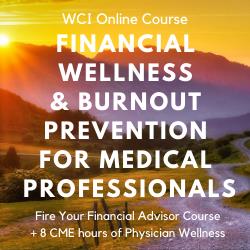<iframe style="width:120px;height:240px;" marginwidth="0" marginheight="0" scrolling="no" frameborder="0" src="//ws-na.amazon-adsystem.com/widgets/q?ServiceVersion=20070822&OneJS=1&Operation=GetAdHtml&MarketPlace=US&source=ss&ref=as_ss_li_til&ad_type=product_link&tracking_id=peaceinvesting-20&language=en_US&marketplace=amazon®ion=US&placement=0060555661&asins=0060555661&linkId=80f8e3b229e4b6fdde8abb238ddd5f6e&show_border=true&link_opens_in_new_window=true"></iframe>|<iframe style="width:120px;height:240px;" marginwidth="0" marginheight="0" scrolling="no" frameborder="0" src="//ws-na.amazon-adsystem.com/widgets/q?ServiceVersion=20070822&OneJS=1&Operation=GetAdHtml&MarketPlace=US&source=ss&ref=as_ss_li_til&ad_type=product_link&tracking_id=peaceinvesting-20&language=en_US&marketplace=amazon®ion=US&placement=1119404509&asins=1119404509&linkId=0beba130446bb217ea2d9cfdcf3b846b&show_border=true&link_opens_in_new_window=true"></iframe>|<iframe style="width:120px;height:240px;" marginwidth="0" marginheight="0" scrolling="no" frameborder="0" src="//ws-na.amazon-adsystem.com/widgets/q?ServiceVersion=20070822&OneJS=1&Operation=GetAdHtml&MarketPlace=US&source=ss&ref=as_ss_li_til&ad_type=product_link&tracking_id=peaceinvesting-20&language=en_US&marketplace=amazon®ion=US&placement=1119376629&asins=1119376629&linkId=2f1e6ff64e783437104d091faaedfec7&show_border=true&link_opens_in_new_window=true"></iframe>

By Dr. Charles Patterson, WCI Columnist
Moving is a part of life for physicians. While there are doctors who spend their entire educational and medical career in one state, they tend to be the exception and not the rule. The AAMC has tracked and published data on the diaspora of residents following graduation, a fascinating report that highlights the migratory patterns of young physicians. Beyond training, the adventure continues particularly for those serving in the US military, overseas for an NGO, stateside in rural settings, or fulfilling locum tenens work. But from the very start, young physicians are incentivized to go where the medicine is.

Early in training, one commonly enters medical school out of their home state (or even country). Call this move No. 1. Then, the first portion of their training will likely take them away from their medical school. This is move No. 2. This assumes that there is not a transitional year between undergraduate training and their categorical residency. If one decides not to pursue a fellowship or to establish their practice around the area in which they trained, the first five years out of training commonly involve at least two moves (moves 3 and 4). The first exciting move is to the place and practice where one thinks they will be setting roots, and the second is to the place where they actually settle roots. Between undergraduate education and the completion of training, a young physician may have moved between one and greater than five times. Each of those moves comes at an increasing expense.
Moving Is Expensive
If it seems that everything was made more expensive by inflation, perhaps you can console yourself by looking at the current value of Meta or crypto (or don’t?). Not everything has become more expensive, but, unfortunately for the transient among us, moving certainly has. The reasons for the price hikes reflect the increased cost of labor (which has become scarce), the increased cost of supplies (trucks, fuel for the trucks, even packing materials), and the relative increase in demand spurred by the pandemic and the popularity of working from home. As interest rates rise, the supply chain settles, and the economy continues in its tumult, we may see some easing of cost increases. Maybe.
Granted, the scale of moving costs is largely dependent on the amount of stuff moved, the types of dwellings from which and to where the goods are moved, the distance between locations, and the complexity of the items one owns. So, if you are looking to move the grand piano you inherited from a houseboat in Seattle to a flat on the seventh floor of a historic New York walkup, prepare thy wallet. If, on the other hand, you have nothing but scrubs and an IKEA futon to move across town, then you should comfortably pay for the pizza gratuity your friends have earned in helping you.
As we grow into our careers, we tend to collect more than knowledge. For this reason, household goods can balloon somewhat rapidly (especially if kids are involved). While a medical student might be hard-pressed to find more than 1,000 pounds of materials, this number can easily double or more by the time one finishes residency. For a physician with a family, the total weight can easily exceed 10-15x that amount. And for a cross-country move, one can expect to pay around $1 per pound in freight costs alone. Feel free to add “moving costs” to the list of great reasons to live like a resident.
More information here:
The Problem with Housing in the Military
Ways to Mitigate Moving Costs
As expensive as moving can be, there are some clever ways to reduce the financial burden.
#1 DIY
This is far and away the least expensive route and the most labor-intensive for you. But if you are light on earthly possessions and are comfortable chauffeuring them, this is the way to go. Borrowing a friend’s truck (or a new friend’s truck) and recycling boxes furthers your penny-pinching cause. As a man built for utility at the expense of beauty (and who has owned a truck), I am somewhat humbled to be asked to help when folks need a hand with moving. What may seem a banal chore is, in reality, a deeply personal undertaking, marked by the vulnerability of transient houselessness. While we might be reluctant to ask a neighbor for such help, it can be a means of friendship-building (and wallet-sparing).
Having relocated my family more times than I care to remember, I’ve become all too familiar with backseat Tetris and navigating a Penske across America’s interstates. Economy isn’t easy or comfortable, but the experience lends insight into the working lives of those driving next to you.
#2 Relocation Allowance
Happily, many employers offer comprehensive relocation packages complete with paid house-hunting trips, preferred real estate agent hookups, and generous moving allocations. One hiring authority I spoke with at a major West Coast HMO disclosed that their organization retained moving companies to relocate physicians who lived more than 50 miles from their new place of work. This service may cost upward of $20,000 to the employer, but to place difficult-to-fill positions, such a benefit is well worth it. The full extent of the moving allowance depends on the desirability of the hiring location and the competitiveness of the specialty. However, it is well worth exploring when in contract negotiations.
For trainees, many programs offer a relocation allowance as well. The robustness of the stipend depends on the program, and given the unpredictable nature of our Match system, new residents and fellows should plan on bankrolling their move in the hopes of being pleasantly surprised. Fret not if you are under the scope of the DoD: each move is considered a Permanent Change of Station or PCS. Options abound in getting you to where you need to go, from a full-service pack-and-unpack to a compensated DIY.
#3 Partial DIY
Partial here means that you pack, others ship, and you unpack. Commonly, this would entail renting a freight box (POD) or trailer to be hauled. While less expensive than a full-service pack-move-unpack service, some would see this as the best of both worlds. Others might see it as the worst. Regardless, it could be a happy medium for those without the resources to do nothing on their own or the inclination to do everything.
#4 Donate and Consider Taxes
There is no time like the present to unload your cookie jar collection or to go minimalist. Keep your receipts, because those donations are tax-deductible. Speaking of, most moving costs unfortunately are no longer tax-deductible, unless you are in the military. Check this handy IRS tool for more details.
#5 Select Down Dates
Moving is cyclical, and there are high- and off-seasons for relocation, just as there are for air travel or trauma. Electing to move in the fall or winter will likely reduce your rates as compared to the late spring or summer. Adding flexible dates or allowing your things to go into temporary storage for several weeks may also reduce hauling costs. I recognize how difficult this can be if there is a family in tow, but with the money saved because of the inconvenience, it's possible you could take them on a nice vacation.
#6 Recycle Moving Goods
The only thing worse than having to purchase and pack dozens of boxes is getting rid of them after your arrival. Used packing supplies can be found on Nextdoor or similar platforms, and it will save you money upfront and time on the back end. While used boxes and packing paper keep detritus out of the trash heap, posting your materials affords an excellent opportunity to meet new neighbors. It's a win-win that keeps on winning.

#7 Look for Discounts
There are monster discounts to be had in the relocation economy. I have grown partial to a certain aforementioned truck rental company because of its excellent service, clean vehicles, and military discounts. A very similar discount applies for AAA members. Of course, discounts for healthcare workers apply to many moving-related ventures: hotel stays, meals, and even tourist stops offer promotions that ease the burden—even if only by a little bit. But hey, a penny saved is a penny earned.
More information here:
My Spouse Is Quitting Medicine
Anticipating the Unforeseen Costs
I’ve not met many folks who enjoy moving: it's an arduous, tense, stress-filled misadventure that carries the real potential to go sideways quickly. As mentioned, the monetary costs are high and are getting higher. But while money is the focus of this article and your accountant, your focus should also be on your wellness, that of your family, and a smooth transition to a new set of life circumstances.
I am lucky to have a spouse and children who embrace the journey. Through all of our many moves (eight since starting medical school), they have kept their spirits up with minimal heartburn. Optimism has become endemic in our family, probably out of necessity. Uprooting our lives to build a new one is hard, plain and simple. But we approach it with the faith that our new life is going to be better. And if it's not better, then we will make it better. I am writing this piece several months removed from yet another cross-country relocation, this time via the military PCS complex. We moved during the high-traffic season, which meant that we didn’t receive our household goods for several weeks following their packing. However, by virtue of the government relocation, we saved thousands (and probably several tens of thousands) of dollars.

It has taken time to adjust. Just the other night, we related that we were finally starting to feel settled: settled into our new house, our new routine, and our new community. It takes time, effort, and more than a little bit of attention. There were, however, several points of focus that helped our transition.
- Taking time en route: We made our way in a leisurely fashion, stopping when we wanted and where we wanted. Doing so took the pressure off of the transition to a new place and instead made it a journey worth remembering.
- Assigning roles: Cleaning, unpacking, and anxious searching for lost items are difficult enough for adults, let alone kids. But giving them each assigned tasks, household areas of responsibility, and accountability to each other was a winning strategy that bonded us in this new place.
- Adventuring hard: Every effort was made to explore our local area (particularly the outdoors). This familiarized us with our new state while getting us away from the cacophony at the house.
- Easing into work: The first five weeks on the job were only 3-4 days in-house. Granted, much of this was onboarding and credentialing, but this afforded our family more time together at home. The transitional period is a great time to burn leave. If, like most folks, you don’t have leave to burn, negotiating a lighter transitional period may behoove you.
- Step outside your shell: For as much as I would have loved to use all my extra time putzing about the house, we made a concerted effort to invite our new neighbors to dinner, to stay and socialize after school, and to participate in work-affiliated gatherings. Believing that relationships make a place special, these investments have already paid dividends and certainly made our transition more pleasant.
Every person’s situation and circumstance are different, and the impetus to move spans a spectrum from the search for adventure to a cataclysmic failure of a bygone era. While such times are often bittersweet, they need not be overly difficult. Budgeting your move, planning for contingencies, and accepting the unexpected are strategies that will do well for your wallet, your family, and your mental health.
If you understand the risks of real estate and want to work with WCI-vetted partners who could help you build wealth through real estate investing, here are some of the best companies in the business.
Featured Real Estate Partners
Wellings Capital
Type of Offering:
Fund
Primary Focus:
Self-Storage / Mobile Homes
Minimum Investment:
$50,000
Year Founded:
2014
Origin Investments
Type of Offering:
Fund
Primary Focus:
Multi-Family
Minimum Investment:
$50,000
Year Founded:
2007
DLP Capital
Type of Offering:
Fund
Primary Focus:
Multi-Family
Minimum Investment:
$200,000
Year Founded:
2008
Mortar Group
Type of Offering:
Syndication
Primary Focus:
Multi-Family
Minimum Investment:
$50,000
Year Founded:
2001
MLG Capital
Type of Offering:
Fund
Primary Focus:
Multi-Family
Minimum Investment:
$50,000
Year Founded:
1987
37th Parallel
Type of Offering:
Fund / Syndication
Primary Focus:
Multi-Family
Minimum Investment:
$100,000
Year Founded:
2008
Southern Impression Homes
Type of Offering:
Turnkey
Primary Focus:
Single Family
Minimum Investment:
$65,000
Year Founded:
2017
The Peak Group
Type of Offering:
REIT
Primary Focus:
Single Family
Minimum Investment:
$25,000
Year Founded:
2000
* Please consider this an introduction to these companies and not a recommendation. You should do your own due diligence on any investment before investing. Most of these opportunities require accredited investor status.
The views expressed in this article are those of the author and do not reflect any official position of the Department of Defense or the US government. These writings are not authorized, approved, or endorsed by any of the above entities.
What other ways can you make moving less expensive and less painful? How many times did you have to move from medical school until now? Has it gotten easier? Comment below!
The post The Costs of Moving (and How to Combat It) appeared first on The White Coat Investor - Investing & Personal Finance for Doctors.
||
----------------------------
By: Josh Katzowitz
Title: The Costs of Moving (and How to Combat It)
Sourced From: www.whitecoatinvestor.com/costs-of-moving/
Published Date: Wed, 22 Feb 2023 07:30:21 +0000
Read More
Did you miss our previous article...
https://peaceofmindinvesting.com/investing/an-open-letter-to-insurance-agents
.png) InvestingStocksToolsClubsVideosPrivacy PolicyTerms And Conditions
InvestingStocksToolsClubsVideosPrivacy PolicyTerms And Conditions
